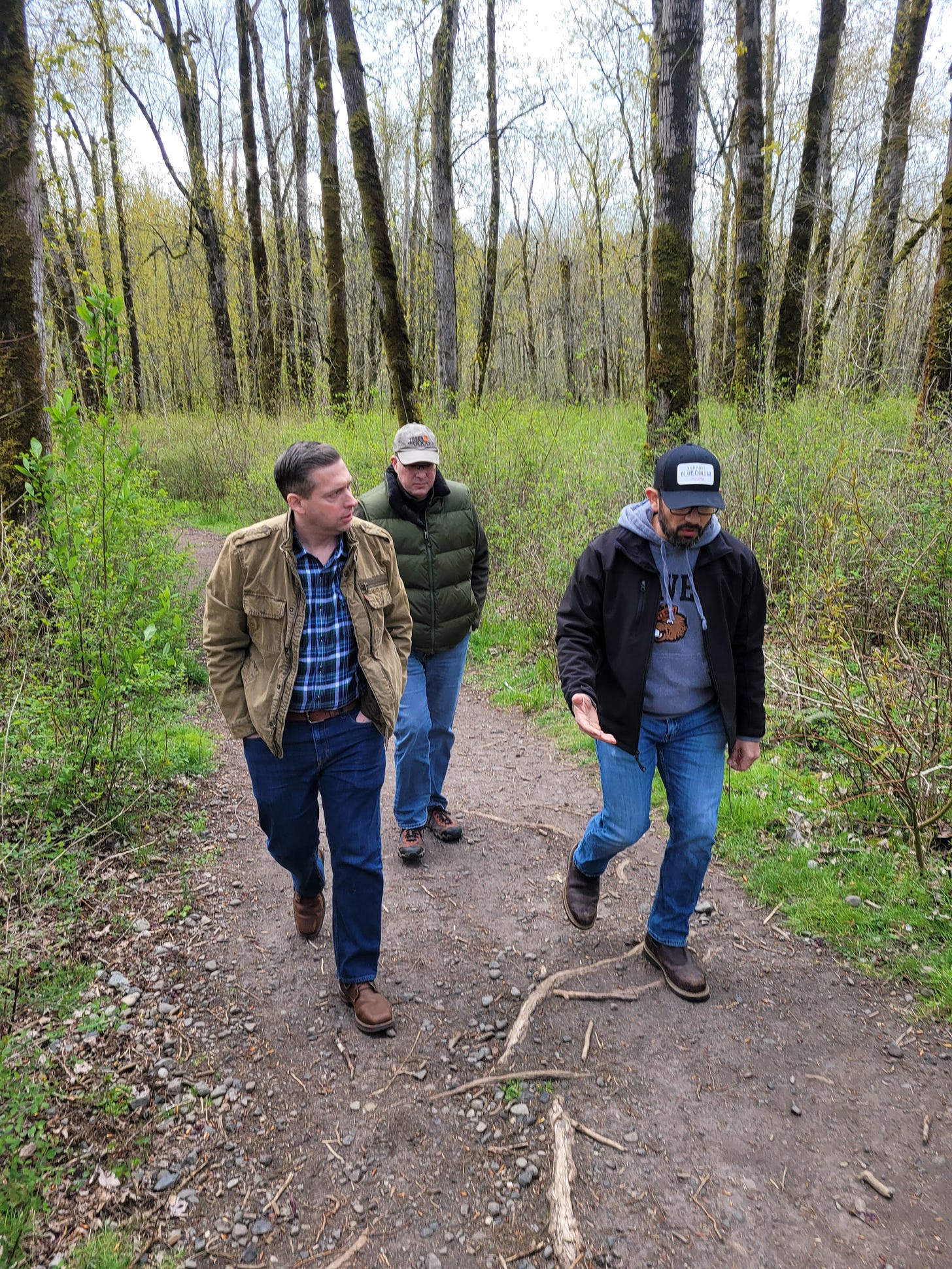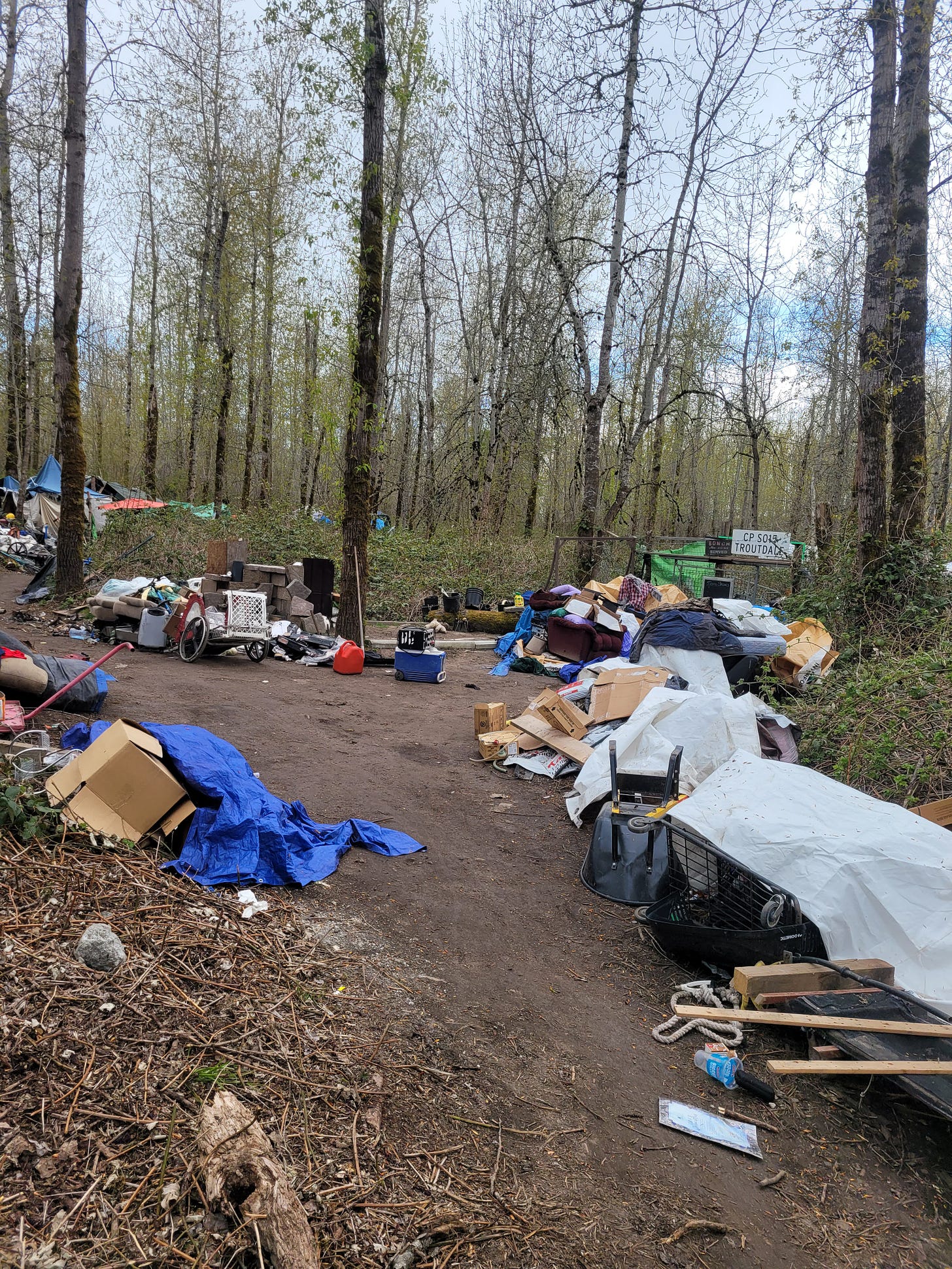Saturday Special from Mayor Stan Pulliam: We Need a Comprehensive Homelessness Policy. Now.
In many ways, homelessness is a breakdown in the social safety net. We need policies to help our homeless population find and obtain affordable housing and stay housed.
Editor’s Note: Do your part to Sustain the Way!
30 Oregonians have gotten us to $2,610 - keep the momentum going so we can hire a part time editor.
Will you send $20?
Donate here or subscribe below to create a part-time editor position.
Stan Pulliam is the Mayor of his hometown of Sandy. He’s been called a Rising Star after receiving local and national headlines and recently formed an exploratory committee for Oregon Governor. He’s married to his wife MacKensey and has 2 daughters.
No matter where you live, you don’t have to go far from home to see that Oregon has a homelessness problem. There are tarps along our freeways, tents in our parks, and sleeping bodies sprawled in store fronts and doorways. Needles, garbage, and other filth are scattered around abandoned property, creating a landscape of broken down bikes, shopping carts, propane tanks, cars, and RVs in what used to be family parks and bike paths.
Years ago, homelessness was a mostly “downtown” issue. The cost of homelessness was concentrated in the city centers, which meant that service providers could concentrate their efforts in a relatively small area.
Today, homelessness is a crisis that plagues every corner of our state. From my community of Sandy to Ontario to Coos Bay, from Portland to Ashland, just about every community in our state has a homeless problem. Ten years ago, 40 percent of the homeless lived downtown. Today, it’s only 20 percent. Many homeless individuals have left the downtowns for the outskirts, residential areas, and parks and natural areas.
The spread of homeless camps throughout the state has taken a toll on many of the natural wonders that Oregonians treasure. Earlier this month, I visited Sandy River Delta Park with Troutdale mayor Randy Lauer and Eric Fruits from Cascade Policy Institute. We were shocked at the devastation after only a few minutes of walking the trails of Thousand Acres.
All the “no camping” signs had been chopped down and tossed aside. Walking along the trail, we saw dozens of trees, which had been cut down and stacked as firewood standing outside a sprawling, abandoned camp. The area was littered with garbage, burned out shopping carts, tarps and storefront banners. There were stripped down bicycles and a giant pile of spray paint cans that seemed to have been tossed on a fire. The area smelled of oil and gasoline.
In Portland, you have to pay hundreds of dollars for a permit to cut down a tree on your own property—even if it’s dead. Out here, a clearcutting operation turned a small stand of healthy trees into firewood with no repercussions. If a business was found dumping toxic waste in a forest, Oregon’s Department of Environmental Quality would come down on the company like a ton of bricks. But out here, in a national forest, it’s a real world version of Mad Max—individuals are left with only what they can find and a coordinated response is seemingly absent.
Walking further into the woods, we could see tents and tarps through the trees. One group of campers set up a compound of sorts. Their camp was fenced-in with its own gate and signage. Outside were shopping carts, some filled with what appeared to be brand new clothes inside a Fred Meyer shopping bag. Bikes and pieces of bikes were strewn all about. Somehow, the inhabitants managed to drive a van and utility trailer back there. Restoring this area to its natural beauty is going to be a monumental task.
It’s easy to see this destruction and blight as a failure of federal, state, and local governments to provide basic public safety and health services. It’s easy to see it as a breakdown in social norms that value private property and public welfare. We need policies to focus on restoring community livability and safety by moving the homeless off the streets and out of the parks to more sustainable and humane housing.
At the same time, homelessness is a deeply personal crisis for those experiencing it. Everyone who loses housing has his or her own unique circumstances: job loss, mental illness, physical disability, substance abuse, domestic violence, rising rent, or eviction. Close to two-thirds of those who are homeless have mental health or substance abuse issues.
While visiting Thousand Acres, I had a lengthy conversation with Barbara, who is from Spokane and was a manager of a senior care facility there. She became homeless after her son, who was homeless as a result of drug addiction, was badly burned while huffing over a fire. She said that she couldn’t stand to be away from him after his accident and couldn’t focus on her work, so she came to join him. We asked if he was in the camp and she said no, but he was in the area. She said she only saw him once or twice a week. I’ll never forget the final words she said to me that day. “I know he’s in his 30’s and is a grown man now. But I cannot give up on him. He’ll always be my baby.” It sounds like something that my mom would say in that situation.
In many ways, homelessness is a breakdown in the social safety net. We need policies to help our homeless population find and obtain affordable housing and stay housed.
Addressing homelessness is not an either\or proposition. Homelessness presents a personal crisis, but a large and growing homeless population imposes incredible financial and quality-of-life costs on the community at large. While many unsheltered people would like nothing more than to be housed, there are also many who have little interest in their own — or their community’s — well-being. Our policies should reach out to those who want help, be firm with those who don’t, and create an environment where residents can feel safe.
First, we need to help those who want it, even if it’s only getting homeless individuals into a temporary shelter. That means building more shelters or adapting unused buildings as emergency shelters.
We also need to do a better job partnering with nonprofits who are often hamstrung by city or county bureaucracy, forcing them to turn away homeless people because of paperwork compliance, or competition for lucrative public contracts.
Second, having more shelter space is meaningless if people don’t know where to go. That’s why we need to develop a system to track available shelter space in real time. It seems like an obvious solution, which is why it’s so surprising it hasn’t been done in Oregon. It doesn’t have to be high-tech. For example, in Modesto, California, the county just calls the shelters once a day and records their vacancies on a spreadsheet. This simple solution can go a long way toward helping our homeless find shelter.
Once we have sufficient shelter and a way to track it, then we can take steps to be firm with those who continue to camp on our streets, our parks, and our doorsteps. We can then enforce camping bans and begin cleaning up the public spaces spoiled by the litter and filth that comes along with the camps.
Third, in the long term we need policies and programs in place to transition people out of homelessness and prevent them from becoming homeless in the first place, like compassionate mental health and addiction services. However, today, our state and local governments have it backwards. They want permanent housing first before addressing the problem itself. Their approach would take more than a decade and billions of dollars before we see any improvements. I know I speak for millions of Oregonians when I say, “We can’t wait.”
Watch Mayor Pulliam’s video on homelessness here.
Read more about Homelessness in Oregon in Eric Fruit’s whitepaper, available here.
****************************************
Keep the conversation going:
Facebook (facebook.com/oregonway)
Twitter (@the_oregon_way)
Reach out to Mayor Pulliam:
@StanPulliam




